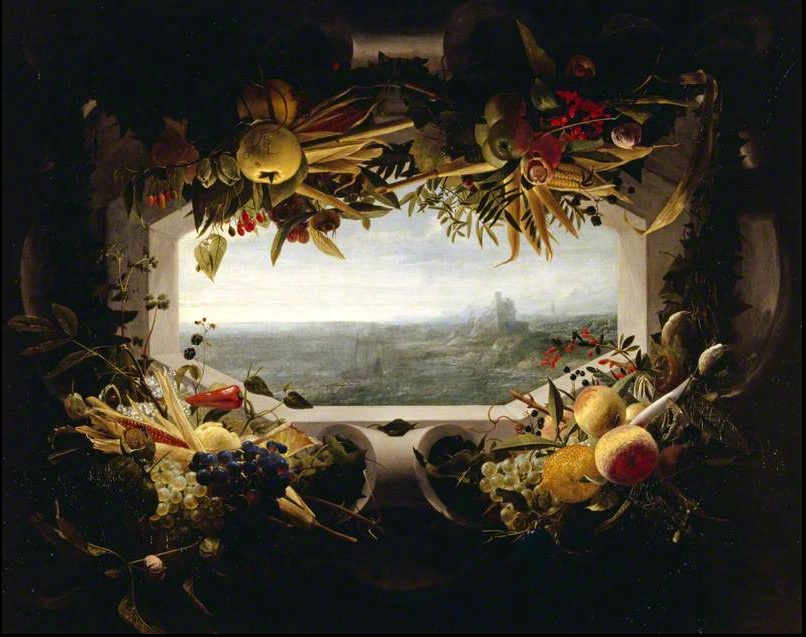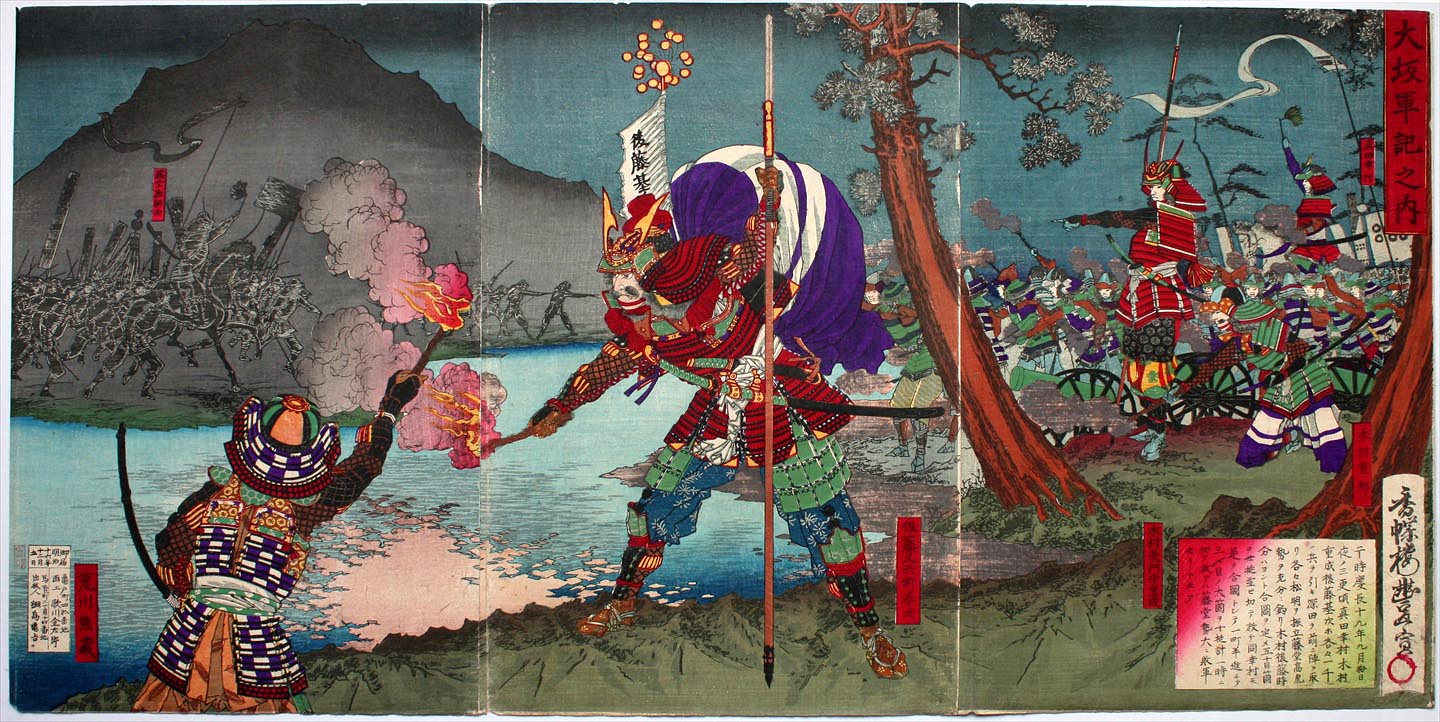|
Jan Anton Van Der Baren
Jan Anton van der Baren (1615 ŌĆō 30 or 31 December 1686) was a Southern Netherlands, Flemish painter, draughtsman, priest and museum curator active in Brussels and Vienna. He specialised in still lifes of flowers and vegetables, some of which include an architectural background.Jan Anton van der Baren at the Netherlands Institute for Art History A. Hajdeski, ''Die Niederl├żnder in Wien'' Oud-Holland 25 (1907), p. 9-26; p. 14-19 He held the offices of court chaplain and director of the picture gallery of Archduke Leopold Wilhelm of Austria, Archduke Leopold Wilhelm and Leopold I, Holy Roman Emperor, Emperor Leopold I.Barbara Dossi. "Bar ... [...More Info...] [...Related Items...] OR: [Wikipedia] [Google] [Baidu] |
Jan Anton Van Der Baren - A Seascape Within A Garland Of Fruit
Jan, JaN or JAN may refer to: Acronyms * Jackson, Mississippi (Amtrak station), US, Amtrak station code JAN * Jackson-Evers International Airport, Mississippi, US, IATA code * Jabhat al-Nusra (JaN), a Syrian militant group * Japanese Article Number, a barcode standard compatible with EAN * Japanese Accepted Name, a Japanese nonproprietary drug name * Job Accommodation Network, US, for people with disabilities * ''Joint Army-Navy'', US standards for electronic color codes, etc. * ''Journal of Advanced Nursing'' Personal name * Jan (name), male variant of ''John'', female shortened form of ''Janet'' and ''Janice'' * Jan (Persian name), Persian word meaning 'life', 'soul', 'dear'; also used as a name * Ran (surname), romanized from Mandarin as Jan in WadeŌĆōGiles * J├Īn, Slovak name Other uses * January, as an abbreviation for the first month of the year in the Gregorian calendar * Jan (cards), a term in some card games when a player loses without taking any tricks or scoring a m ... [...More Info...] [...Related Items...] OR: [Wikipedia] [Google] [Baidu] |
Erasmus Quellinus II
Erasmus Quellinus the Younger or Erasmus Quellinus II (1607ŌĆō1678) was a Flemish painter, engraver, draughtsman and tapestry designer who worked in various genres including history, portrait, allegorical, battle and animal paintings. He was a pupil of Peter Paul Rubens and one of the closest collaborators of Rubens in the 1630s. Following Rubens' death in 1640 he became one of the most successful painters in Flanders. He was a prolific draughtsman who made designs for decorative programmes in the context of official celebrations, for publications by the local publishers and for tapestries and sculptures realised by the local workshops. His work reveals the Classicist trend in the Baroque.Matthias Depoorter, ''Erasmus Quellinus II'' at Baroque in the Southern Netherlands [...More Info...] [...Related Items...] OR: [Wikipedia] [Google] [Baidu] |
Flemish Roman Catholic Priests
Flemish (''Vlaams'') is a Low Franconian dialect cluster of the Dutch language. It is sometimes referred to as Flemish Dutch (), Belgian Dutch ( ), or Southern Dutch (). Flemish is native to Flanders, a historical region in northern Belgium; it is spoken by Flemings, the dominant ethnic group of the region. Outside of Flanders, it is also spoken to some extent in French Flanders and the Dutch Zeelandic Flanders. Terminology The term ''Flemish'' itself has become ambiguous. Nowadays, it is used in at least five ways, depending on the context. These include: # An indication of Dutch written and spoken in Flanders including the Dutch standard language as well as the non-standardized dialects, including intermediate forms between vernacular dialects and the standard. Some linguists avoid the term ''Flemish'' in this context and prefer the designation ''Belgian-Dutch'' or ''South-Dutch'' # A synonym for the so-called intermediate language in Flanders region, the # An indicatio ... [...More Info...] [...Related Items...] OR: [Wikipedia] [Google] [Baidu] |
Flemish Priests
Flemish (''Vlaams'') is a Low Franconian dialect cluster of the Dutch language. It is sometimes referred to as Flemish Dutch (), Belgian Dutch ( ), or Southern Dutch (). Flemish is native to Flanders, a historical region in northern Belgium; it is spoken by Flemings, the dominant ethnic group of the region. Outside of Flanders, it is also spoken to some extent in French Flanders and the Dutch Zeelandic Flanders. Terminology The term ''Flemish'' itself has become ambiguous. Nowadays, it is used in at least five ways, depending on the context. These include: # An indication of Dutch written and spoken in Flanders including the Dutch standard language as well as the non-standardized dialects, including intermediate forms between vernacular dialects and the standard. Some linguists avoid the term ''Flemish'' in this context and prefer the designation ''Belgian-Dutch'' or ''South-Dutch'' # A synonym for the so-called intermediate language in Flanders region, the # An indicati ... [...More Info...] [...Related Items...] OR: [Wikipedia] [Google] [Baidu] |
Flemish Still Life Painters
Flemish (''Vlaams'') is a Low Franconian dialect cluster of the Dutch language. It is sometimes referred to as Flemish Dutch (), Belgian Dutch ( ), or Southern Dutch (). Flemish is native to Flanders, a historical region in northern Belgium; it is spoken by Flemings, the dominant ethnic group of the region. Outside of Flanders, it is also spoken to some extent in French Flanders and the Dutch Zeelandic Flanders. Terminology The term ''Flemish'' itself has become ambiguous. Nowadays, it is used in at least five ways, depending on the context. These include: # An indication of Dutch written and spoken in Flanders including the Dutch standard language as well as the non-standardized dialects, including intermediate forms between vernacular dialects and the standard. Some linguists avoid the term ''Flemish'' in this context and prefer the designation ''Belgian-Dutch'' or ''South-Dutch'' # A synonym for the so-called intermediate language in Flanders region, the # An indicatio ... [...More Info...] [...Related Items...] OR: [Wikipedia] [Google] [Baidu] |
Flemish Baroque Painters
Flemish (''Vlaams'') is a Low Franconian dialect cluster of the Dutch language. It is sometimes referred to as Flemish Dutch (), Belgian Dutch ( ), or Southern Dutch (). Flemish is native to Flanders, a historical region in northern Belgium; it is spoken by Flemings, the dominant ethnic group of the region. Outside of Flanders, it is also spoken to some extent in French Flanders and the Dutch Zeelandic Flanders. Terminology The term ''Flemish'' itself has become ambiguous. Nowadays, it is used in at least five ways, depending on the context. These include: # An indication of Dutch written and spoken in Flanders including the Dutch standard language as well as the non-standardized dialects, including intermediate forms between vernacular dialects and the standard. Some linguists avoid the term ''Flemish'' in this context and prefer the designation ''Belgian-Dutch'' or ''South-Dutch'' # A synonym for the so-called intermediate language in Flanders region, the # An indica ... [...More Info...] [...Related Items...] OR: [Wikipedia] [Google] [Baidu] |
1686 Deaths
Events January–March * January 3 – In Madras (now Chennai) in India, local residents employed by the East India Company threaten to boycott their jobs after corporate administrator William Gyfford imposes a house tax on residences within the city walls. Gyfford places security forces at all entrances to the city and threatens to banish anyone who fails to pay their taxes, as well as to confiscate the goods of merchants who refuse to make sales. A compromise is reached the next day on the amount of the taxes. * January 17 – King Louis XIV of France reports the success of the Edict of Fontainebleau, issued on October 22 against the Protestant Huguenots, and reports that after less than three months, the vast majority of the Huguenot population had left the country. * January 29 – In Guatemala, Spanish Army Captain Melchor Rodr├Łguez Mazariegos leads a campaign to conquer the indigenous Maya people in the rain forests of Lacandona, departing f ... [...More Info...] [...Related Items...] OR: [Wikipedia] [Google] [Baidu] |
1615 Births
Events January–June * January 1 – The New Netherland Company is granted a three-year monopoly in North American trade, between the 40th and 45th parallels. * February – Sir Thomas Roe sets out to become the first ambassador from the court of the King of England to the Mughal Emperor Jahangir, sailing in the ''Lyon'' under the command of captain Christopher Newport. * March 10 – John Ogilvie, a Jesuit priest, is hanged and drawn at Glasgow Cross in Scotland for refusing to pledge allegiance to King James VI of Scotland; he will be canonised in 1976, becoming the only post-Reformation Scottish saint. * April 21 – The Wignacourt Aqueduct is inaugurated in Malta. * May 6 – The Peace of Tyrnau is signed between Matthias, Holy Roman Emperor, and G├Ībor Bethlen. * June 2 – The first R├®collet missionaries arrive at Quebec City, from Rouen, France. * June 3 – The Eastern Army of Tokugawa Ieyasu and the Osaka Army of Toyotomi ... [...More Info...] [...Related Items...] OR: [Wikipedia] [Google] [Baidu] |
Royal Museums Of Fine Arts Of Belgium
The Royal Museums of Fine Arts of Belgium (french: Mus├®es royaux des Beaux-Arts de Belgique, nl, Koninklijke Musea voor Schone Kunsten van Belgi├½) are a group of art museums in Brussels, Belgium. They include six museums: the Oldmasters Museum, the Magritte Museum, the Fin-de-Si├©cle Museum, the Modern Museum, the Antoine Wiertz Museum and the Constantin Meunier Museum. The Royal Museums contains over 20,000 drawings, sculptures, and paintings, covering a period extending from the early 15th century to the present, such as those of Flemish old masters like Bruegel, Rogier van der Weyden, Robert Campin, Anthony van Dyck, Jacob Jordaens, and Peter Paul Rubens, making it the most popular art institution and most visited museum complex in Belgium. The Magritte Museum houses the world's largest collection of the works of the surrealist Ren├® Magritte. History Early history The museum was founded in 1801 by Napoleon and opened in 1803 as the Museum of Fine Arts of Brussels ( ... [...More Info...] [...Related Items...] OR: [Wikipedia] [Google] [Baidu] |
Museum Of Fine Arts (Budapest)
The Museum of Fine Arts ( hu, Sz├®pm┼▒v├®szeti M├║zeum łse╦Épmyve╦És╔øti ╦łmu╦Éz╔øum is a museum in Heroes' Square, Budapest, Hungary, facing the Palace of Art. It was built by the plans of Albert Schickedanz and F├╝l├Čp Herzog in an eclectic- neoclassical style , between 1900 and 1906. The museum's collection is made up of international art (other than Hungarian), including all periods of European art, and comprises more than 100,000 pieces. The collection is made up of older additions such as those from Buda Castle, the Esterh├Īzy and Zichy estates, as well as donations from individual collectors. The Museum's collection is made up of six departments: Egyptian, Antique, Old sculpture gallery, Old master paintings gallery, Modern collection, Graphics collection. The institution celebrated its centenary in 2006. Collection and exhibits Ancient Egyptian art The gallery holds the second largest collection of Egyptian art in central Europe. It comprises a number of collection ... [...More Info...] [...Related Items...] OR: [Wikipedia] [Google] [Baidu] |




